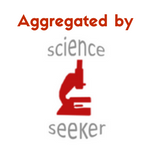By Ru Liu, MS, RD
“Everybody in there was African-American. Everybody was.” An African-American nurse in Michigan who contracted COVID-19 herself described the emergency room during an interview with the New York Times. The infection and death rates of COVID-19 increase with age. But when taking a second look at the rates, it is evident that infections and deaths are the highest among Non-Hispanic Blacks and Hispanics in every age group.
The disparities are striking. According to the U.S. Centers for Disease Control and Prevention (CDC), Native Americans or Alaska Natives and Hispanics are 2.8 times more likely than non-Hispanic whites to be infected with the novel coronavirus, and non-Hispanic Blacks are 2.6 times more likely. Among COVID-19 positive cases, persons who are non-Hispanic Native American, Alaska Native, Black, and Hispanic are over 4.5 times more likely to be hospitalized than non-Hispanic whites. The minority groups also have higher death rates than non-Hispanic whites: 1.4 times higher for Native Americans or Alaska Natives, 2.1 times higher for non-Hispanic Blacks, and 1.1 times higher for Hispanics.
This is not a new phenomenon. This new pandemic is merely a new manifestation of the health disparities that we have seen for decades. Non-Hispanic Blacks and Hispanics have the highest rates of obesity, cardiovascular disease, and high blood pressure in the U.S, according to the CDC. These are some of the most relevant “underlying conditions” that put COVID-19 patients at high risk for severe complications and even death.
In particular, nutrition-related health disparities were already rampant before COVID-19. “Food deserts,” areas where people have limited access to healthy food options, are more prevalent in minority neighborhoods, independent of the poverty level, according to a 2010 study. White neighborhoods are nearly twice as likely to have a chain supermarket than Black neighborhoods. Residents in these neighborhoods are less likely to own a car, which adds another obstacle to access supermarkets that are far away. Living in a food desert has been associated with a higher risk for many chronic diseases, such as obesity and cardiovascular disease. As we know, these morbidities tend to worsen the prognosis of COVID-19.
Living in a “food desert” and food insecurity often go hand in hand. The disparities in the prevalence of food insecurity between racial and ethnic minorities and white households have persisted for over more than a decade. The data from the United States Department of Agriculture (USDA) from 2001 to 2016 showed that the food insecurity rates in non-Hispanic Black and Hispanic households were more than twice higher than that in non-Hispanic white households. Food insecurity, living without enough food to maintain an active and healthy life, has been associated with an increased risk for chronic diseases (hypertension and type 2 diabetes) and mental illnesses (anxiety and depression). People who are already food insecure prior to the pandemic are particularly vulnerable to the aftermath of contracting the virus.
Nutrition, along with many other societal and social factors, contributes to the health disparities seen in COVID-19. While it is true that COVID-19 does not discriminate, the disease hits some harder. We have a lot of work to do as a society to lessen and eventually eliminate the inequality in health outcomes. We need more supermarkets with healthy food options near the people who need them the most, we need to reach out to the most vulnerable communities with nutrition assistance, and we need to create a society where the healthy choices are the cheaper and easier choices.
Peer-edited by Jason Wermers
Picture credit: Unsplash

